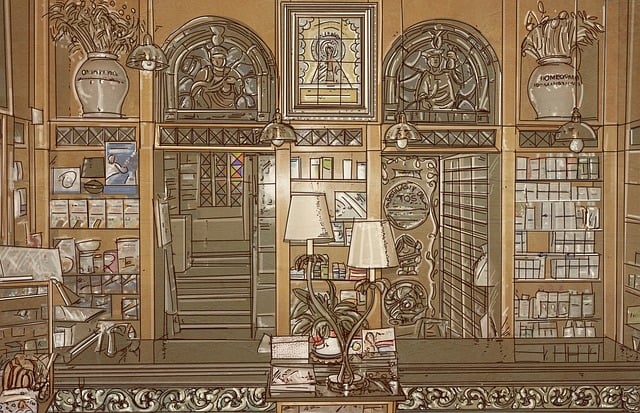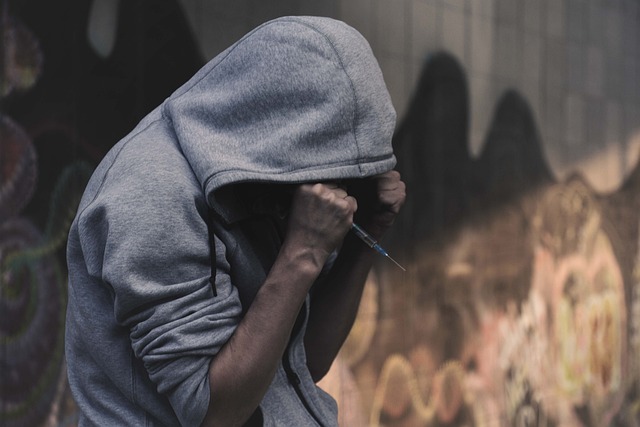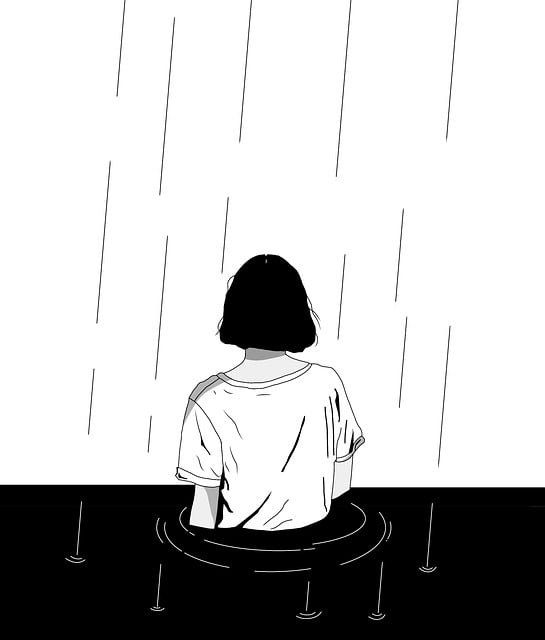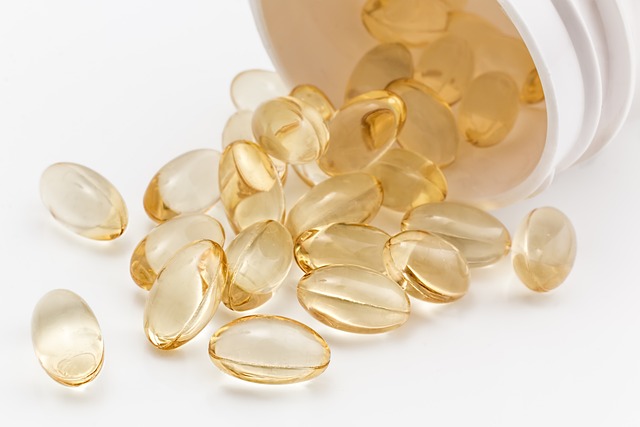Art therapy is a powerful tool for exploring and managing emotions within depression treatment programs. It offers non-verbal methods like expressive art and color symbolism, allowing individuals to create visuals representing their emotional states. This process fosters self-awareness, reduces self-judgement, and provides an alternative outlet for expression. Art therapy creates safe spaces with controlled environments and diverse art materials, encouraging genuine emotional release. Various art mediums cater to different preferences, leading to insights, empowerment, and healthy coping mechanisms. Case studies show its effectiveness in reducing depressive symptoms and improving mood across diverse populations. As a complement to traditional mental health programs, art therapy offers an innovative and accessible approach to depression treatment, with digital platforms and AI algorithms further enhancing its reach and customization.
Art therapy offers a unique and powerful approach to emotional expression, especially for those dealing with mental health challenges like depression. This therapeutic method harnesses the creative process to facilitate emotional release and enhance overall well-being. In this comprehensive guide, we explore various aspects of art therapy, from its role in processing emotions to different techniques and its proven benefits as a depression treatment program. Discover how art can transform pain into healing and unlock new avenues for mental health support.
Understanding Emotional Expression and Its Impact on Mental Health

Emotional expression is a fundamental aspect of human experience, playing a pivotal role in our mental health and overall well-being. Art therapy offers a unique and powerful medium for individuals to explore, understand, and release their emotions. By engaging in creative processes, people can communicate feelings that may be difficult to articulate verbally, especially during times of struggle or trauma. This form of expression allows for a non-verbal connection with one’s inner self, providing an alternative route to process and manage complex emotions.
When left unexpressed, emotions can have profound effects on mental health, leading to conditions such as depression. Art therapy serves as a complementary approach within depression treatment programs, enabling individuals to visually represent and confront their emotional landscapes. Through this therapeutic process, people gain insight into their feelings, experiences, and triggers, fostering a sense of self-awareness and empowerment. By transforming inner turmoil into artistic representations, art therapy can be a transformative tool in the journey towards healing and recovery.
The Role of Art in Therapy: A Creative Outlet for Emotions

Art has long been recognized as a powerful tool for self-expression and healing. In the context of therapy, it serves as a unique and creative outlet for individuals to explore and communicate their emotions. Through art, clients can convey complex feelings that may be difficult to articulate verbally, making it an invaluable resource for depression treatment programs. This non-verbal form of communication allows for increased introspection and self-awareness, enabling individuals to process and release repressed emotions.
The therapeutic process involving art encourages a sense of freedom and creativity, fostering an environment where self-judgement is reduced. It provides an alternative means of expression, especially beneficial for those who struggle with verbalizing their experiences. By engaging in artistic activities, individuals can symbolically represent their inner world, offering a safe and expressive space to navigate through emotional challenges often associated with depression.
Art Therapy Techniques for Different Emotional States

Art therapy offers a unique and powerful approach to emotional expression, catering to various psychological states. For individuals dealing with depression, specific techniques have proven effective in treatment programs. One such method is expressive art, which encourages clients to create visuals without judgment or interpretation. This process allows them to explore and release emotions, providing an alternative way to communicate feelings that might be difficult to articulate verbally.
Another popular technique is color and symbolism. Therapists guide clients to choose colors and symbols that resonate with their emotional state, helping them understand and interpret their inner experiences. For instance, using warm colors like red or orange can evoke strong emotions, while cooler tones may convey calmness. Symbolism in art allows for a more abstract yet profound expression of complex feelings, making it an invaluable tool in depression treatment programs.
Benefits of Art as a Depression Treatment Program

Art therapy offers a unique and powerful approach to depression treatment programs, providing individuals with a creative outlet to express their emotions in a non-verbal way. The benefits are numerous; it allows people to explore and release repressed feelings, fostering a sense of emotional freedom. Through various art forms, such as painting, drawing, or even sculpting, individuals can convey complex emotions that might be difficult to articulate verbally. This process can help reduce symptoms of depression, improve mood, and enhance overall well-being.
Moreover, art therapy provides a safe and supportive environment where people can engage in self-exploration without judgment. It encourages mindfulness and helps individuals develop coping strategies to manage their mental health effectively. The act of creating art can be therapeutic itself, offering a sense of accomplishment and pride as one overcomes creative blocks, thereby boosting self-esteem and providing a positive distraction from depressive thoughts.
Creating a Safe Space: Preparing the Art Therapy Environment

Art therapy offers a unique and powerful approach to emotional expression, creating a safe space for individuals to explore their feelings and experiences. When preparing the art therapy environment, therapists must ensure it is welcoming and non-judgmental, fostering a sense of comfort and trust. This involves careful consideration of lighting, color schemes, and layout to promote relaxation and creativity. A well-designed space can encourage clients to open up about their emotions, making it an integral part of effective depression treatment programs.
The art therapy room should be free from distractions, allowing individuals to focus on their inner world through artistic means. Providing a variety of art materials enables clients to choose what resonates with them, whether it’s painting, drawing, or sculpting. This personalized approach respects individual preferences and encourages genuine emotional expression, which is vital for the therapeutic process.
Exploring Different Art Forms for Effective Emotional Release

Art therapy offers a unique and versatile approach to emotional expression, allowing individuals to explore various art forms to effectively release and communicate their feelings. From painting and drawing to sculpting and collage, different mediums provide distinct avenues for self-exploration. For instance, painting can help individuals visually translate their emotions onto canvas, while sculpting may offer a tangible way to shape and release difficult feelings. Collage, with its juxtaposition of images, can encourage reflection on contrasting emotions or aspects of one’s life.
This diversity in art forms caters to different preferences and expression styles, making it an inclusive practice for those seeking depression treatment programs or alternative avenues for emotional healing. By engaging in these creative processes, individuals can gain new insights into their inner worlds, foster a sense of empowerment, and develop healthy coping mechanisms, ultimately contributing to improved mental well-being.
Case Studies: Successful Art Therapy Interventions for Depression

Art therapy has emerged as a powerful tool in the arsenal of depression treatment programs, offering a unique and non-verbal approach to emotional expression. Case studies have shown its effectiveness in helping individuals cope with and overcome symptoms of depression. For instance, research has demonstrated that expressive art interventions can significantly reduce depressive symptoms and improve overall mood. One such study involved a group of adolescents struggling with clinical depression, who participated in a 12-week art therapy program. The participants created artwork reflecting their inner feelings and experiences, leading to marked improvements in their emotional well-being by the end of the program.
Another compelling case involves adult patients in a psychiatric hospital setting. Through art-making sessions, these individuals were able to process and externalize their traumatic experiences and intense emotions. The therapeutic process facilitated self-awareness and provided an outlet for previously silenced feelings. As a result, many participants reported feeling more empowered and better equipped to manage their mental health in the long term. These examples illustrate how art therapy can be tailored to diverse populations, offering a creative and safe space for emotional exploration and healing.
Integrating Art Therapy into Traditional Mental Health Programs

Art therapy offers a unique and powerful tool for integrating emotional expression into traditional mental health programs, particularly in the context of depression treatment. By incorporating creative processes, individuals struggling with depression can explore and communicate their feelings in a non-verbal way, which can be especially beneficial for those who find conventional talk therapy challenging. This approach allows for a more nuanced understanding of complex emotions, enabling participants to gain new insights and promote healing.
In many mental health programs, art therapy is used as a complementary practice alongside traditional talking therapies. It provides an alternative means of expression, fostering a sense of safety and creativity that can enhance overall well-being. Studies have shown positive outcomes in combining art therapy with depression treatment programs, leading to improved mood, reduced anxiety, and enhanced coping mechanisms. This holistic integration has the potential to revolutionize mental health care by offering a more inclusive and accessible approach to emotional expression and recovery.
Future Prospects and Innovations in Art-Based Emotional Expression Therapy

The future of art therapy as a depression treatment program looks promising, with innovations that could further enhance its effectiveness. Digital platforms and virtual reality are emerging tools, offering new dimensions to creative expression and providing accessible options for individuals who may face barriers in accessing traditional in-person sessions. These technologies enable therapists to reach a wider audience, especially those in remote areas or with limited mobility.
Additionally, the integration of artificial intelligence (AI) has the potential to revolutionize art therapy. AI algorithms can analyze artistic creations, providing insights into an individual’s emotional state and helping therapists tailor interventions more precisely. This technology could also assist in developing personalized art-based exercises, further customizing depression treatment programs to meet diverse therapeutic needs.
